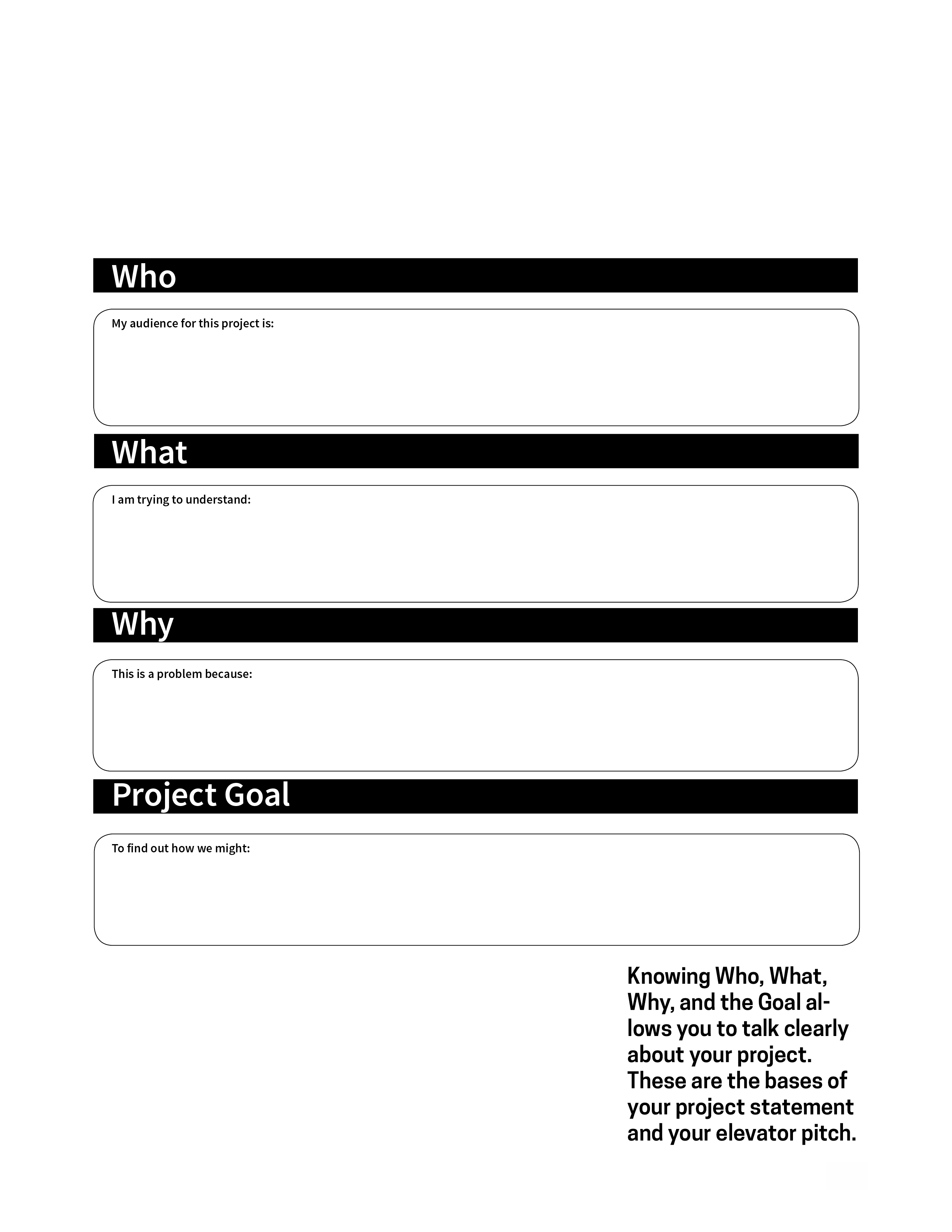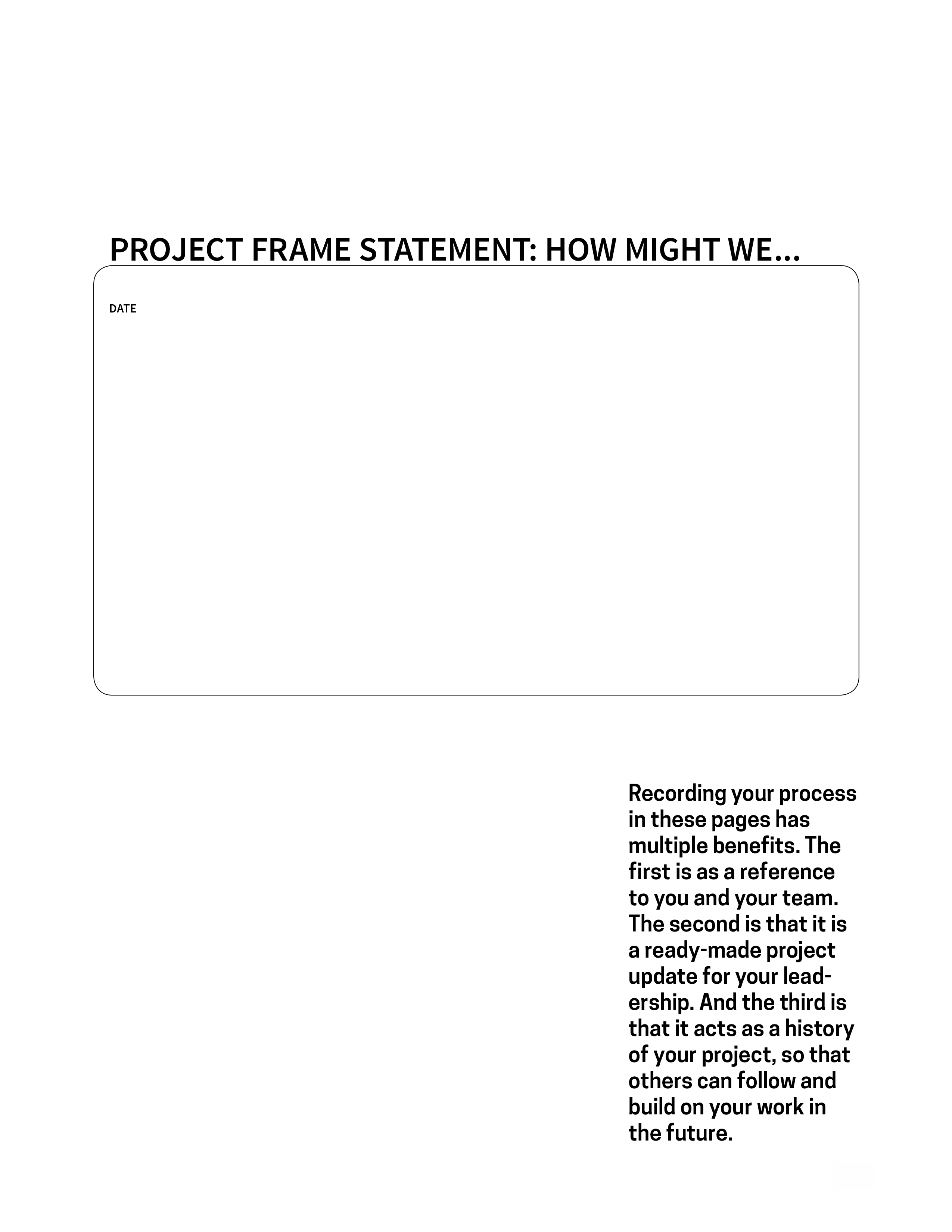Discovery Operations Guide
Framing and Reframing
Iteratively Frame Your Problem
What is Problem Framing?
(and why reframe?)
At this point in your project, you’ve learned more about your problem or brief through desk research. Almost inevitably, this new knowledge answers some of your questions or lets you know your initial starting point was a little off. This means you can narrow in on a more specific problem frame than you started out with.
This is good news! Because field research requires resources, reframing your problem frame to a narrower focus can help preserve those resources for high-return field research. Good desk research also prevents you and your team from going out into the field and performing exhausting orignal research, only to find that other people have already covered the ground you thought you discovered.
In the Lab’s Problem Framing module, problem framing is explained like this:
“Framing a design problem or “brief” is often seen as a preliminary, even pro-forma part of developing solutions. But how we define a problem largely defines its solution, and typically design problems and solutions co-evolve. This iterative framing, and reframing of problems is as much a design opportunity as finding solutions.”
In this way, effective problem framing helps to:
- Avoid wasting resources on solving the wrong problems
- Expand the range of possible solutions to any given problem
- Maximize creative leverage and innovative potential of HCD
Framework - Who, What, Why, and Goal
Articulating the project frame clearly is one of the most important set ups to a successful project. Whether your project originates from your own work or from a project brief from your leadership, it is essential to be able to answer each of the questions in this section before moving on to the next phase of development.
Print or digitally mark up the framework in this section to answer:
- Who this project is for?
- What are you trying to understand?
- Why this is a problem?
- What is the Project Goal?
Work with your team or a colleague to answer and edit these statements. Get another teammate to sit in and give feedback if you can. Ensure that your answers are precise, coherent and in plain language. This process of phrasing and rephrasing can help you articulate precisely so you can communicate your idea to others.

Framework - Problem Frame Statement
How you articulate your problem will influence how you approach it, so it’s important to try to find the right words.
Stating your problem in the best possible terms takes creativity and critical thinking. Here are some distinctions and strategies that will help set you up well for design.
Using the phrase “How might we…” is a useful way to start a problem frame statement. This is because of the language: “How” is action-oriented, “Might” is full of open-ended potential, and “We” is collaborative and inviting.
Referencing these directions and the work done in Desk Research and the Who, What, Why, and Goal frameworks, try writing your project frame statement.
